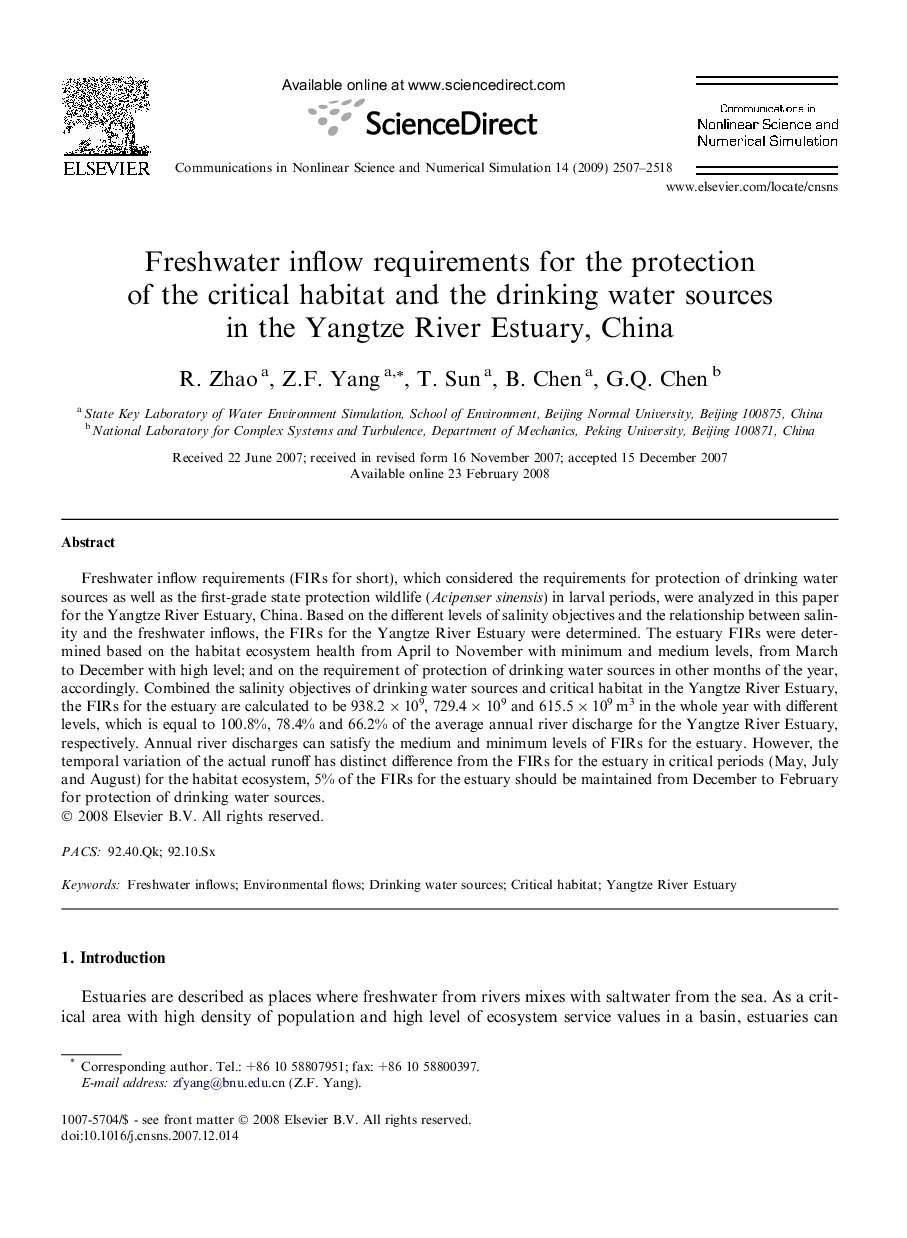| Article ID | Journal | Published Year | Pages | File Type |
|---|---|---|---|---|
| 767608 | Communications in Nonlinear Science and Numerical Simulation | 2009 | 12 Pages |
Freshwater inflow requirements (FIRs for short), which considered the requirements for protection of drinking water sources as well as the first-grade state protection wildlife (Acipenser sinensis) in larval periods, were analyzed in this paper for the Yangtze River Estuary, China. Based on the different levels of salinity objectives and the relationship between salinity and the freshwater inflows, the FIRs for the Yangtze River Estuary were determined. The estuary FIRs were determined based on the habitat ecosystem health from April to November with minimum and medium levels, from March to December with high level; and on the requirement of protection of drinking water sources in other months of the year, accordingly. Combined the salinity objectives of drinking water sources and critical habitat in the Yangtze River Estuary, the FIRs for the estuary are calculated to be 938.2 × 109, 729.4 × 109 and 615.5 × 109 m3 in the whole year with different levels, which is equal to 100.8%, 78.4% and 66.2% of the average annual river discharge for the Yangtze River Estuary, respectively. Annual river discharges can satisfy the medium and minimum levels of FIRs for the estuary. However, the temporal variation of the actual runoff has distinct difference from the FIRs for the estuary in critical periods (May, July and August) for the habitat ecosystem, 5% of the FIRs for the estuary should be maintained from December to February for protection of drinking water sources.
